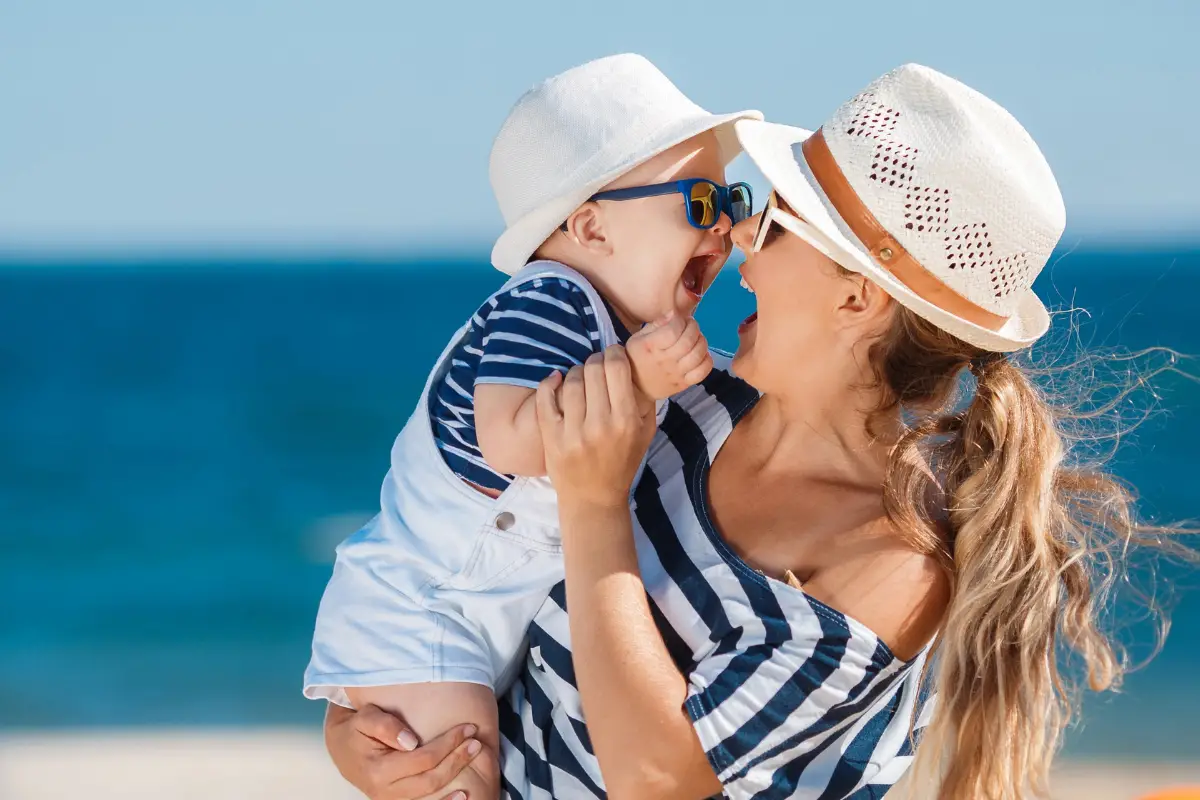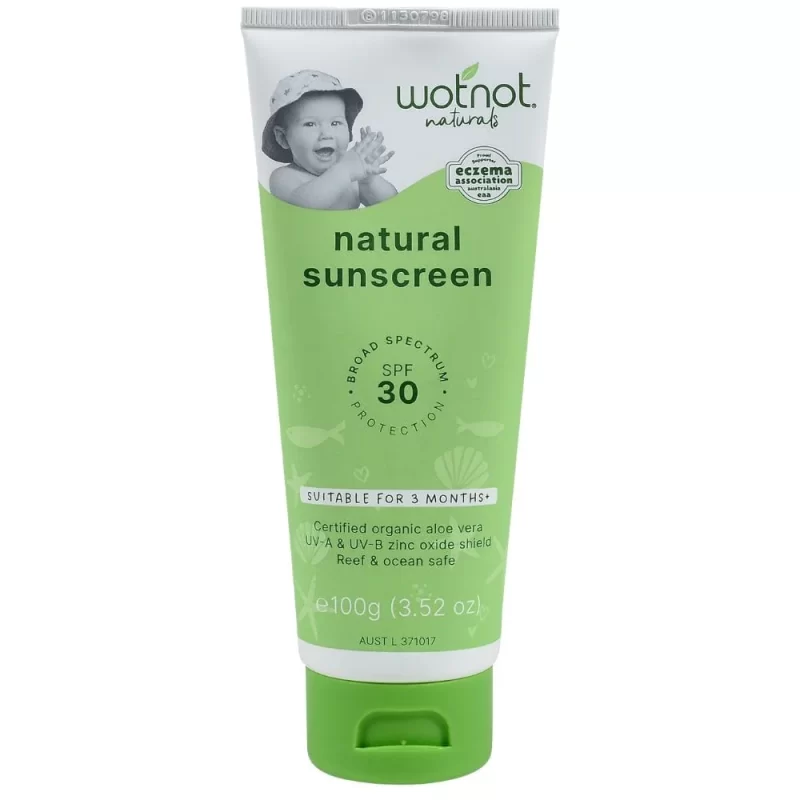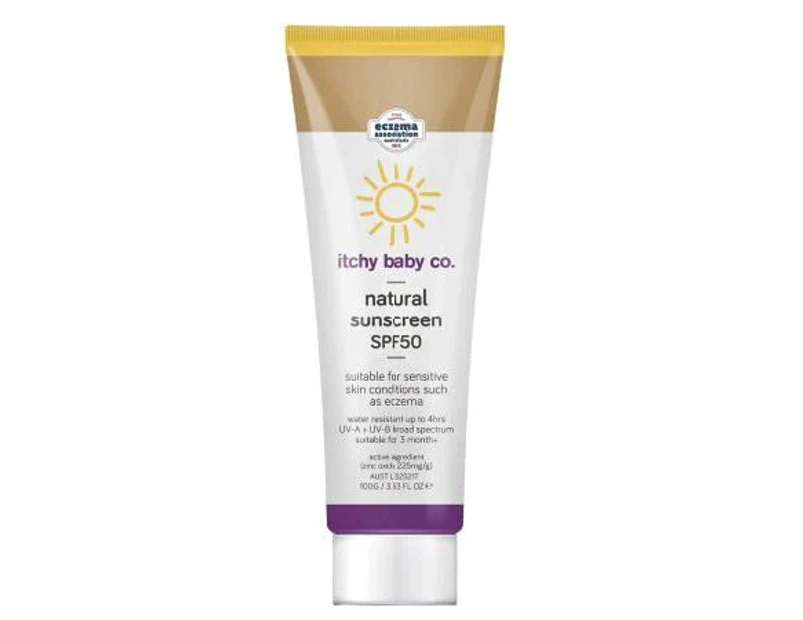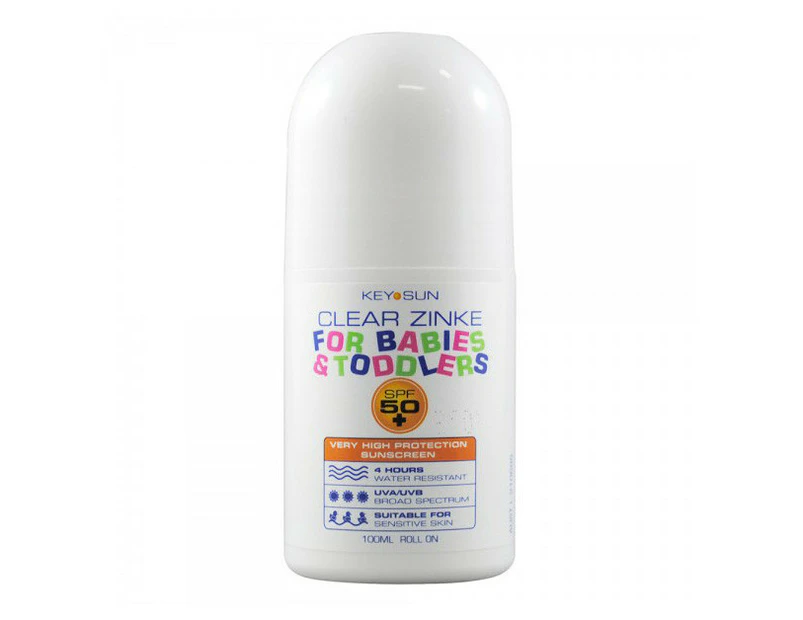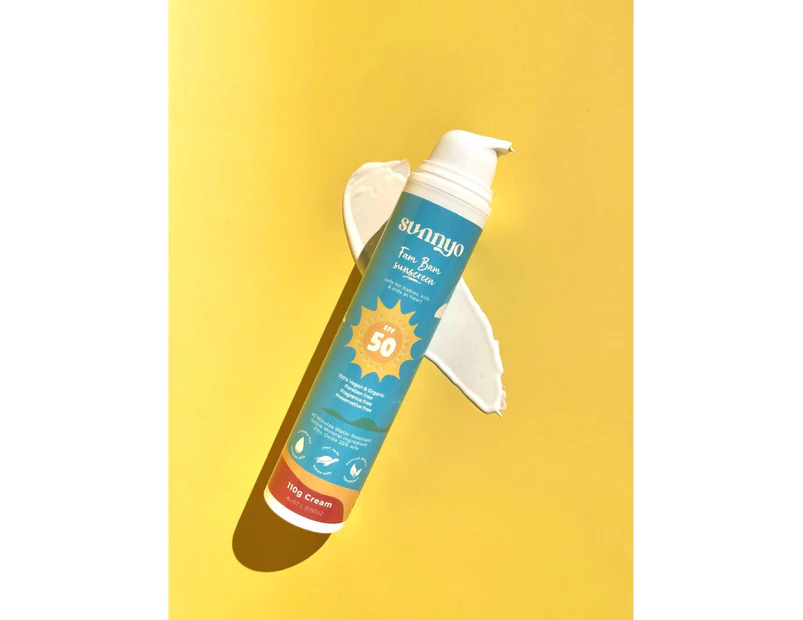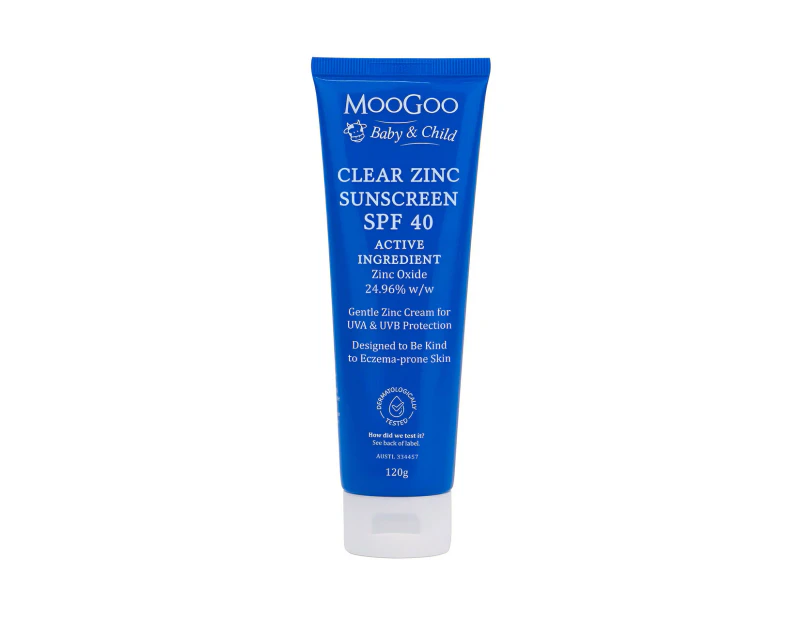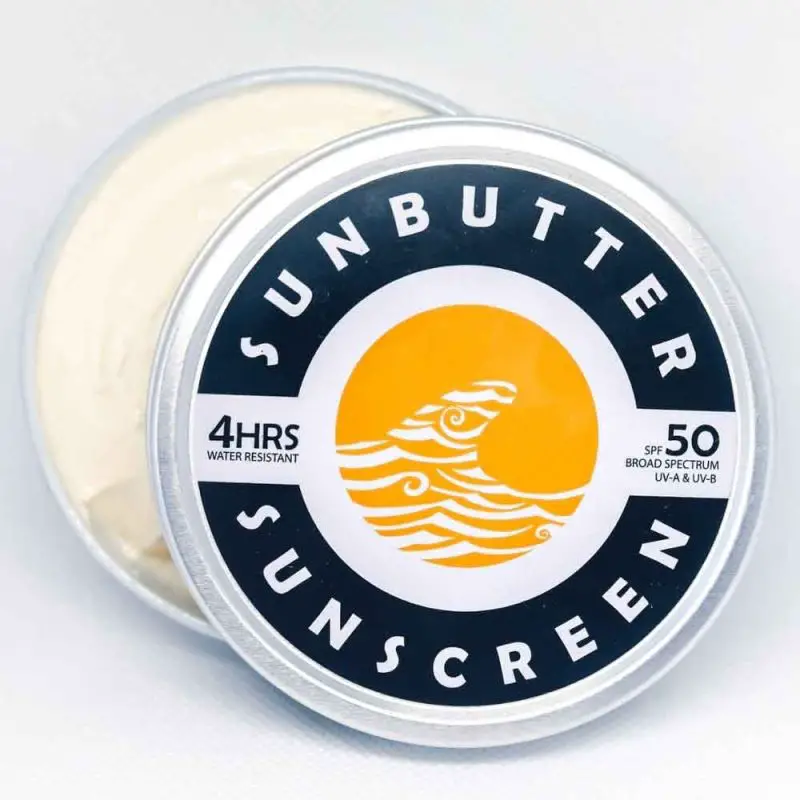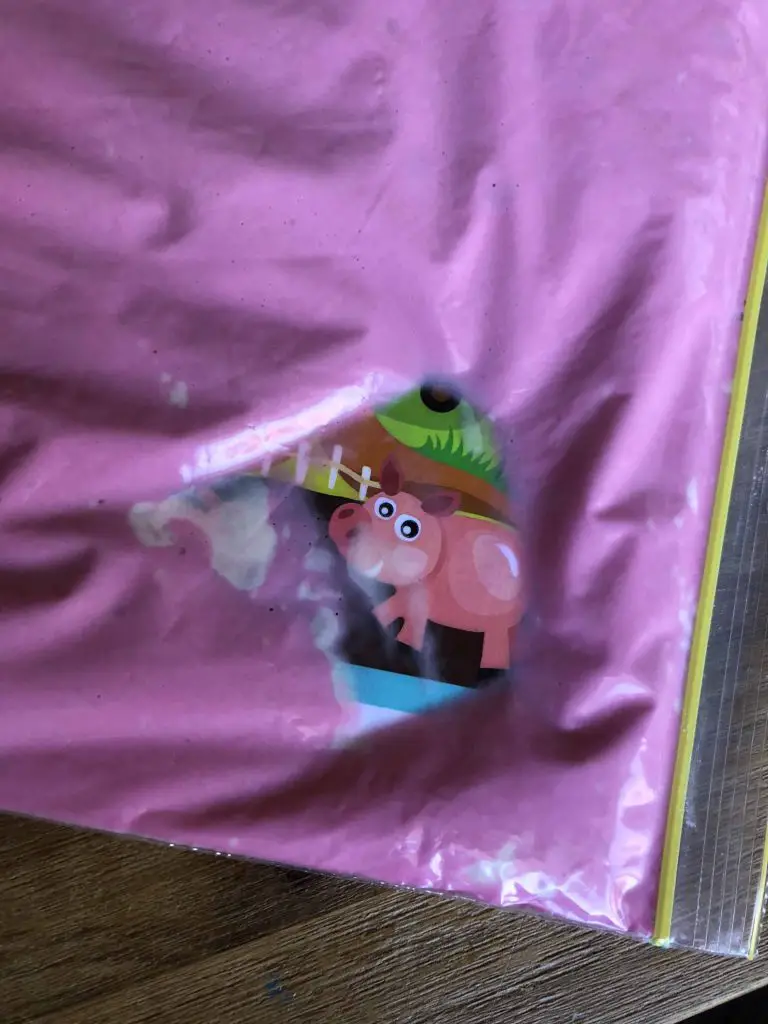Sun-safe Babies and Kids: Choosing the Best Sunscreen
Disclosure: This blog contains affiliate links which I may earn a small commission from if you purchase through them, at no extra cost to you.
As the sun shines brighter and outdoor adventures beckon, protecting your little one’s delicate skin with the best infant sunscreen becomes more crucial than ever.
Babies have especially sensitive skin that requires careful attention and protection from harmful UV rays.
With an overwhelming array of options on the market, choosing the right sunscreen for infants can be daunting for parents.
In this article, we’ll explore the best infant sunscreens available, highlighting their safety, effectiveness, and gentle formulations.
Whether you’re planning a day at the beach or a stroll in the park, ensuring your baby is well-protected from sun damage is essential for their health and comfort.
Let’s explore the top factors to consider that provide peace of mind for parents while keeping those tiny bodies safe from the sun!
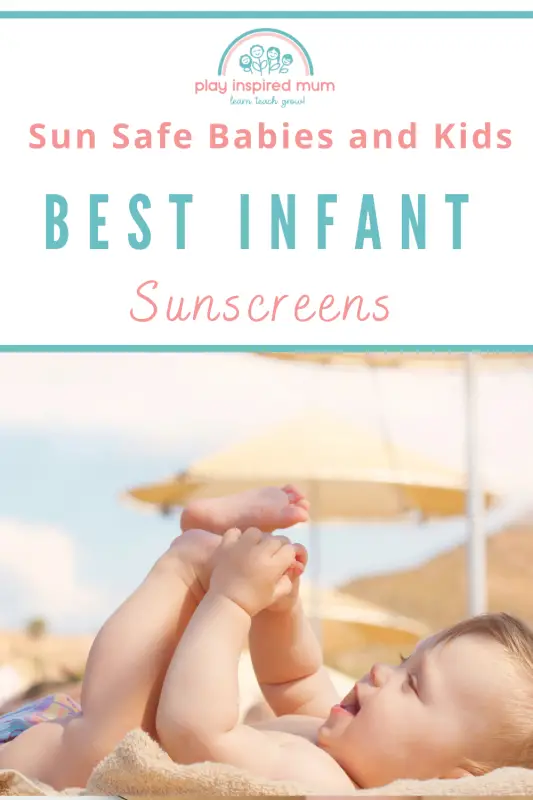
Sun-safe Babies and Kids: Choosing the Best Sunscreen
I’ve always believed in the importance of protecting our little ones from the sun’s harmful rays.
The quest to find the best sunscreen for babies and kids often feels like navigating a maze.
With a myriad of options out there, from mineral physical sunscreen that leverages titanium dioxide and non-nano zinc oxide to chemical sunscreens boasting a range of UV protection factors, the journey is complex.
It involves diving deep into the specifics of UVB and UVA rays, considering water resistance for those relentless summer splashes, and striking a balance between effective sun care and nurturing the most sensitive skin.
I realized, that to shield our children effectively, understanding broad-spectrum protection, ingredients safe for young skin, and additional measures such as protective clothing is crucial.
Understanding Sunscreen: The Basics
I understand the significance of safeguarding our skin from UV radiation.
This invisible threat is divided into UVA and UVB rays, each harming us in different ways.
UVA rays, penetrating deep into the skin, accelerate aging and can contribute to skin cancer.
UVB rays target the skin’s surface, are responsible for sunburns, and are a primary culprit in skin cancer development.
A broad-spectrum sunscreen serves as a shield, blocking these harmful effects.
It becomes critical, then, not just for direct sunlight exposure but even on cloudy days.
UV light sneaks through the clouds, making a high SPF, water-resistant sunscreen a must-have for outdoor activities.
This protection holds the key to preventing sun damage and maintaining healthy skin for the entire family.
Truly, understanding this distinction underscores the importance of choosing the right product for maximum defense against the sun’s rays.
The Importance of SPF
What is the relevance of SPF in our battle against the sun’s harmful rays?
SPF, or Sun Protection Factor, serves as a critical measure of how well sunscreen shields us from UVB rays, those notorious for causing skin cancer and sunburn.
This indicator has guided countless individuals in selecting the best sunscreen, ensuring a layer of defense for both the most sensitive skin of babies and the adventurous spirits of older children.
Understanding SPF’s significance led me to choose mineral sunscreens, rich in non-nano zinc oxide and titanium dioxide, for their broad-spectrum protection.
These formulas not only provide a physical barrier against UVA and UVB rays but are also gentle on the delicate skin of our kids, making them an excellent choice for any outdoor activity.
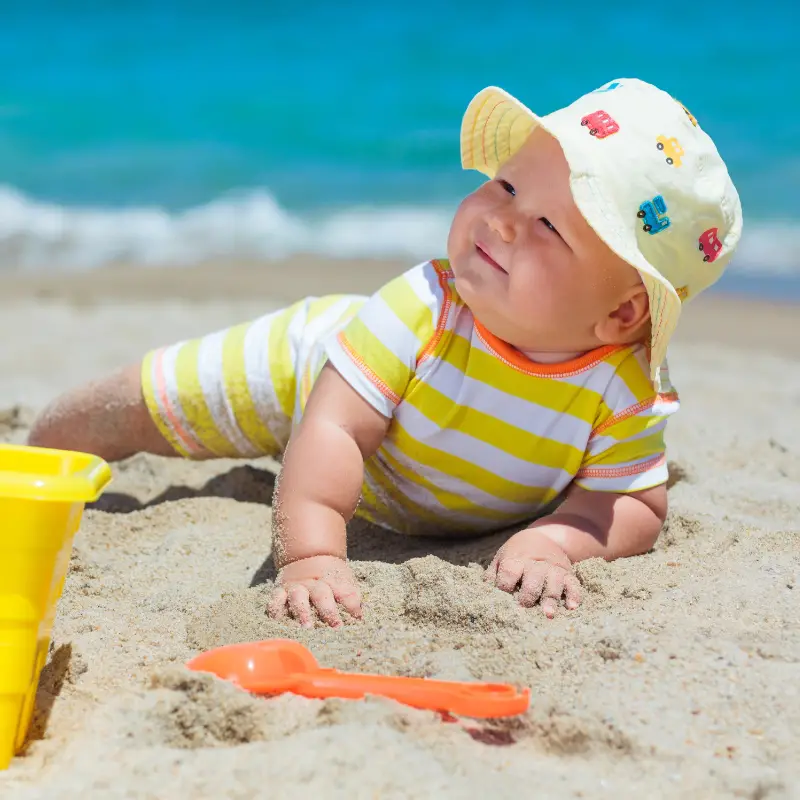
Chemical vs. Mineral Sunscreens
In the sunscreen aisle, you will notice two major types: chemical and mineral also known as physical.
Chemical sunscreens absorb UV rays using active ingredients like avobenzone, making them invisible to your skin’s surface.
They have been the choice for quick absorption and a lighter feel.
However, concerns have arisen over certain chemical ingredients, sparking debates on their safety, especially for young children and marine life.
Mineral sunscreens, on the other hand, reflect UV radiation off the skin using natural ingredients such as non-nano zinc oxide and titanium dioxide.
They sit on top of the skin to form a protective barrier against the sun’s harmful rays, offering broad-spectrum protection.
This physical barrier is less likely to irritate sensitive skin, making it a great choice for babies, kids, and those with sensitive skin types.
Mineral formulas have gained popularity for their environmental benefits and lack of harmful chemicals, aligning with a growing preference for natural sun care solutions.
Why Choose Mineral Sunscreens for Children?
I recognize the challenge many of you face when determining the safest sunscreen for your kids.
After recent studies, it has become clear that mineral sunscreens stand out, especially those with non-nano zinc oxide and titanium dioxide as active ingredients.
These substances act by offering a physical barrier against the sun’s harmful rays, unlike chemical sunscreen ingredients which absorb UV radiation and might irritate sensitive skin.
Mineral-based formulas are, therefore, a great choice for young children and babies’ skin, which is far more delicate than adult skin.
They provide broad-spectrum protection from both UVA and UVB rays without the risk of absorbing harmful chemicals.
A mineral sunscreen with a high SPF is indispensable for outdoor activities on a hot day, ensuring that the most sensitive skin remains shielded from direct sunlight and UV damage.
Identifying Safe Sunscreens for Babies and Kids
Identifying the ideal sunscreen for the youngest members of our families often presents a challenge.
We aim for broad-spectrum sunscreens that shield from both UVA and UVB rays effectively.
This ensures comprehensive protection from the sun’s harmful rays, critical for preventing skin cancer later.
Water resistance in sunscreen becomes crucial for outdoor activities, guaranteeing that the protective barrier remains intact through sweat or swimming.
For our babies’ delicate skin, we prioritize sunscreens formulated with natural ingredients free from harmful chemicals.
These are often mineral sunscreens containing non-nano zinc oxide or titanium dioxide, offering a physical barrier against UV radiation without the risk of skin irritation.
Such formulations not only cater to the most sensitive skin but are also a great choice for preserving marine life, making them ideal for the entire family’s sun care routine.
Looking out for water-resistant sunscreens, with a high SPF and free from harmful ingredients, propels us to make safer, more informed decisions.
Recommended Sunscreens for Different Ages
I must highlight the importance of selecting the appropriate sunscreen for different ages.
For babies under six months, a pediatric dermatologist would generally advise keeping them out of direct sunlight rather than relying on sunscreen.
If unavoidable, a small amount of mineral-based sunscreen with non-nano zinc oxide on exposed areas might be deemed safe.
Reflect on this deeply.
As children grow into toddlers, the choice of sunscreen broadens significantly.
At this stage, a broad-spectrum sunscreen that boasts water resistance is a great option.
Aim for products labeled as safe for sensitive skin, ideally with a sun protection factor (SPF) of at least 30.
For older kids who engage in outdoor activities more vigorously, UV protection becomes crucial.
Ensure the sunscreen offers both UVA and UVB protection.
Interestingly, sunscreen sprays may appear more convenient for this lively group; however, risks of inhalation warrant precautions during application.
Always opt for water-resistant sunscreens for any water-based fun.
Remember, reapplying every two hours is key to maximizing protection.
Best Infant Sunscreens
SPF and Water Resistance
I have always considered the sun protection factor, commonly known as SPF, a critical measure for any sunscreen selected for use by the entire family, notably babies and older kids.
SPF signifies the extent of UVB protection a sunscreen offers, crucial to preventing sunburn and skin damage.
One important thing to remember is that a higher SPF provides more significant protection against the sun’s harmful rays, making it a great choice for outdoor activities.
Another key aspect I emphasize is the necessity for water resistance in sunscreens, especially when activities involve a lot of water or sweat.
Water-resistant sunscreens are designed to provide UV protection that lasts longer during swimming or sweating, ensuring the skin remains shielded under direct sunlight.
This feature is indispensable for maintaining broad-spectrum protection against both UVA and UVB rays during lengthy outdoor adventures.
It ensures that children’s sensitive skin is well-protected, while the family enjoys sunny days by the coral reef or on hot playgrounds without the imminent threat of UV radiation.
Sunscreen Application Tips for Young Skin
Applying sunscreen on the delicate skin of babies and kids is a vital step in guarding them against the sun’s harmful rays.
Efficacy hinges on correct application.
A generous dollop, roughly the size of a golf ball, is necessary to cover the entire body of a young child.
I ensure that no spot is missed, focusing intently on areas that are often overlooked such as behind the ears, under the arms, and the back of the knees.
Over the years we have used several application methods.
While the kids love the theatrics of spray sunscreen, I have found using a cheap makeup brush to be the most efficient way to apply sunscreen.
To shield my child from UVB and UVA rays, I opted for sunscreens touting broad-spectrum protection.
This choice also considers water resistance, especially for outdoor activities or hot days when sweating may occur.
Experience taught me that reapplying every two hours is non-negotiable, and even more frequently after swimming or wiping with a towel.
For babies and kids, the security of their future skin health begins with our actions today.
Hence, selecting the safest sunscreen, coupled with meticulous application and reapplication, forms a robust barrier against the potential damage from UV radiation.

Alternatives and Additional Measures for Protection
Aside from adopting the use of mineral-based sunscreens, we have identified a range of alternative strategies to shield our children from the sun’s harmful rays, underscoring the essence of comprehensive sun protection.
These approaches are crucial, especially considering the delicate skin of babies and the adventurous nature of older kids engaging in outdoor activities.
Protective clothing plays a pivotal role in guarding against UV rays.
It is particularly beneficial for children of all ages, from those tender months of age to the more active older children, and skin tone.
Incorporating a long-sleeved shirt, hats, and sunglasses can significantly reduce exposure, offering an essential physical barrier against UV radiation.
Seeking shade, whether under a tree, an umbrella, or a canopy, especially during peak UV radiation times, effectively minimizes direct sunlight contact.
The Cancer Council recommends it is a good idea to seek shade cover when the UV index reaches 8 to protect against sun exposure.
This method proves invaluable during outdoor playtimes or a hot day at the beach.
Integrating these supplemental measures with sunscreen application forms a robust defense against potential sun damage, ensuring the well-being of our entire family.
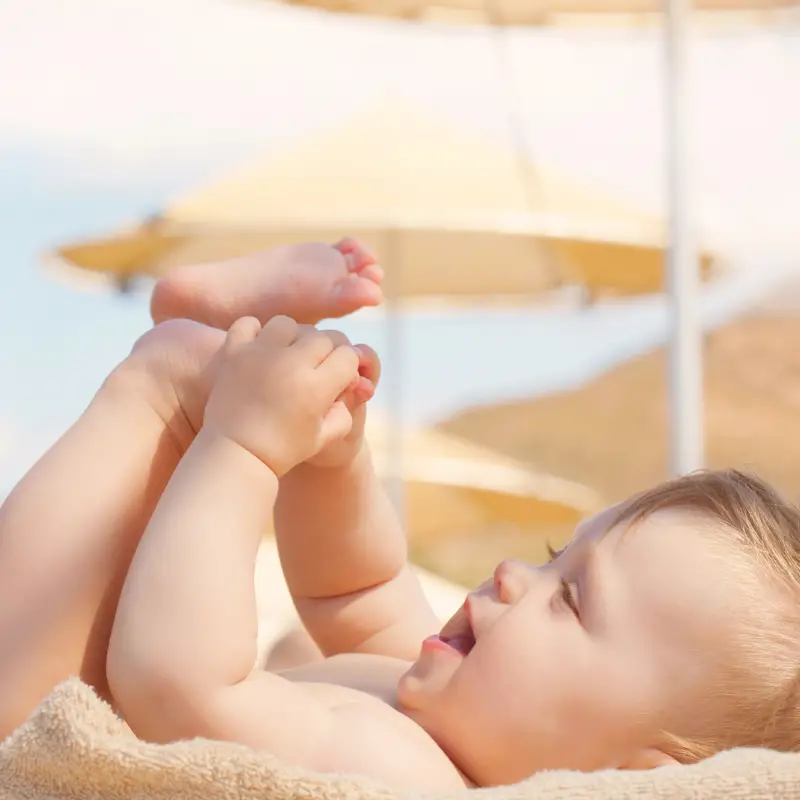
Sensitive Skin Considerations
Babies and kids with the most sensitive skin require a gentle formula and special consideration in selecting sunscreen.
Baby’s delicate skin is more prone to irritation, making it crucial to opt for gentle ingredients.
Mineral sunscreens, particularly those containing non-nano zinc oxide and titanium dioxide, stand out as the safest sunscreen options.
These mineral-based formulas create a physical barrier against UV rays while minimizing the risk of adverse reactions to baby’s skin.
They are free of harmful chemicals and chemical sunscreen ingredients, which are often linked to sensitivity issues.
For young children’s and babies’ skin, which has not fully developed the protective mechanisms found in adult skin, sunscreens that boast natural ingredients like sugarcane-derived squalane can offer additional soothing benefits.
Owing to recent studies, we know these options provide adequate protection without compromising safety.
Considering a baby-safe sunscreen with broad-spectrum protection ensures defense against both UVA and UVB rays, crucial for preventing sun damage.
Remember to reapply every two hours for ongoing protection, especially after swimming or sweating, to maintain a high level of sun safety.
Environmental Impact of Sunscreen
Many of us seldom consider the broader consequences of our sunscreen choices on the environment.
However, the impact on marine life has become a point of significant concern.
Research has shown that certain ingredients in sunscreens can cause coral bleaching and are toxic to various forms of marine life.
This has led to a growing demand for reef-safe sunscreens, free from harmful chemicals.
Products formulated with non-toxic ingredients not only protect our skin but also safeguard the delicate balance of ocean ecosystems.
Sunscreen ingredients such as oxybenzone and octinoxate have been at the forefront of this environmental issue.
They have been identified as harmful to coral reefs, leading to bans in certain locations known for their marine biodiversity.
A shift towards mineral-based formulas, particularly non-nano zinc oxide and titanium dioxide, offers a gentler alternative.
These ingredients act as a physical barrier against UV rays without the risk of harming marine organisms.
Choosing a reef-safe sunscreen is a simple yet powerful way to contribute to marine conservation.
It allows for the enjoyment of the sun’s rays while ensuring that the vibrant life beneath the waves remains unharmed.
By opting for products free from harmful effects on marine life, we take a significant step towards preserving the beauty and health of our planet’s oceans.
Expiration Dates and Storage
Many of us may have overlooked the significance of checking the sunscreen’s expiration date.
This aspect holds great importance as the active ingredients, such as titanium dioxide and non-nano zinc oxide, degrade over time.
Their ability to shield our skin from harmful UV radiation wanes, putting us at risk, especially the delicate skin of babies and young children.
Storage conditions further influence a sunscreen’s effectiveness.
Exposure to high temperatures can accelerate the breakdown of protective compounds, rendering the product less capable of blocking the sun’s harmful rays.
It is essential to store sunscreen in a cool, dry place, away from direct sunlight.
By doing so, you ensure the mineral-based formula maintains its potency against UVA and UVB rays.
Remember, broad-spectrum sunscreens are designed to offer comprehensive protection, but their efficacy is contingent on proper care.
Beyond safeguarding against sunburn, appropriately stored and unexpired sunscreen contributes to preventing long-term sun damage, including skin cancer.
Embracing these practices guarantees that you, from babies under six months to older kids, enjoy outdoor activities with confidence.
Whether you opt for gentle spray sunscreens or water-resistant sticks, remember that their ability to protect the most sensitive skin hinges on the UV protective measures you take, including attention to expiration dates and storage conditions.
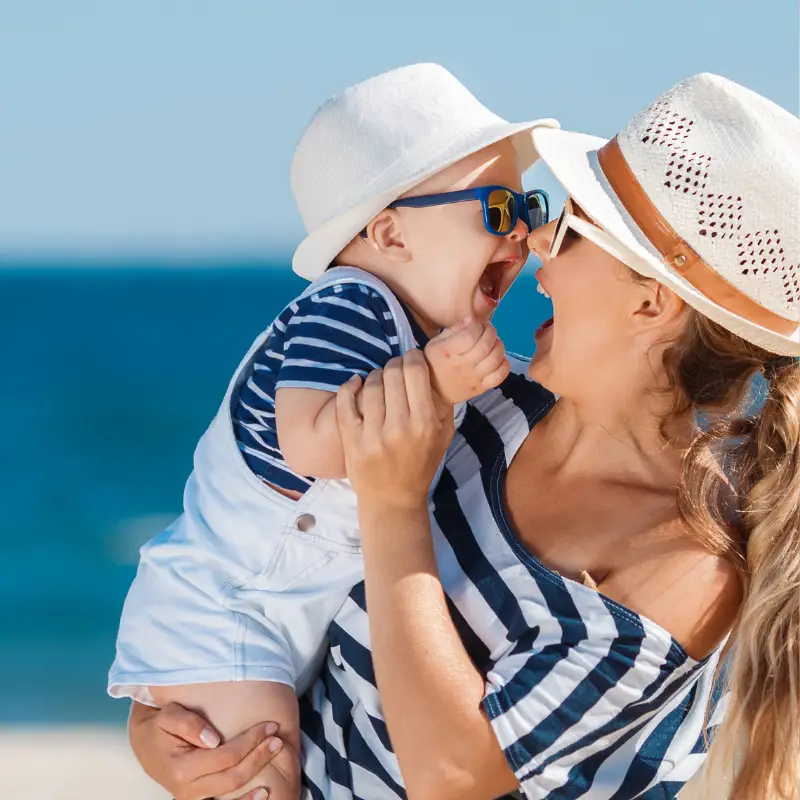
The Bottom Line on Sun Protection
I have delved into the intricacies of sun care, focusing on the utmost protection for our youngest.
Time has revealed that choosing the right sunscreen transforms into a paramount endeavor, not just for immediate UV protection but for long-term skin health.
Through a journey spanning chemical and mineral sunscreens, SPF evaluations, and environmental considerations, a comprehensive narrative unfolded, guiding you toward making informed decisions for your family’s sun safety.
Mineral sunscreens have emerged as a beacon for those of us prioritizing gentle yet effective protection.
Their formulations, rich in non-nano zinc oxide and titanium dioxide, shield the most sensitive skin from the sun’s harmful UV rays without relying on potentially harmful chemical ingredients.
For babies, kids, and indeed, the entire family, these natural ingredients offer a broad-spectrum barrier against UVA and UVB radiation, underlining their prominence in our pursuit of the safest kids sunscreen.
Additional measures complement our sun protection arsenal, significantly broadening the scope of defense.
Wearing protective clothing and seeking shade, especially during peak sunlight hours, fortify our shield against direct sunlight.
Water-resistant sunscreens champion our needs during water or outdoor activities, ensuring ongoing UV radiation protection.
Let us also not overlook the crucial role of reapplication; it is as vital as the sunscreen selection itself.
And in our eco-conscious world, reef-safe formulations address the environmental impact, safeguarding marine life while protecting our skin.
This comprehensive approach underscores an unwavering commitment to sun safety.
It propels us to choose not only the best baby sunscreen but also to adopt practices that support overall well-being.
We’ve navigated through UVB and UVA rays, SPF significance, water resistance, and beyond.
What stands clear is our collective responsibility to shield our skin from the sun’s potential damage, employing a strategy that combines the best of sunscreen science with proactive sun care habits.

